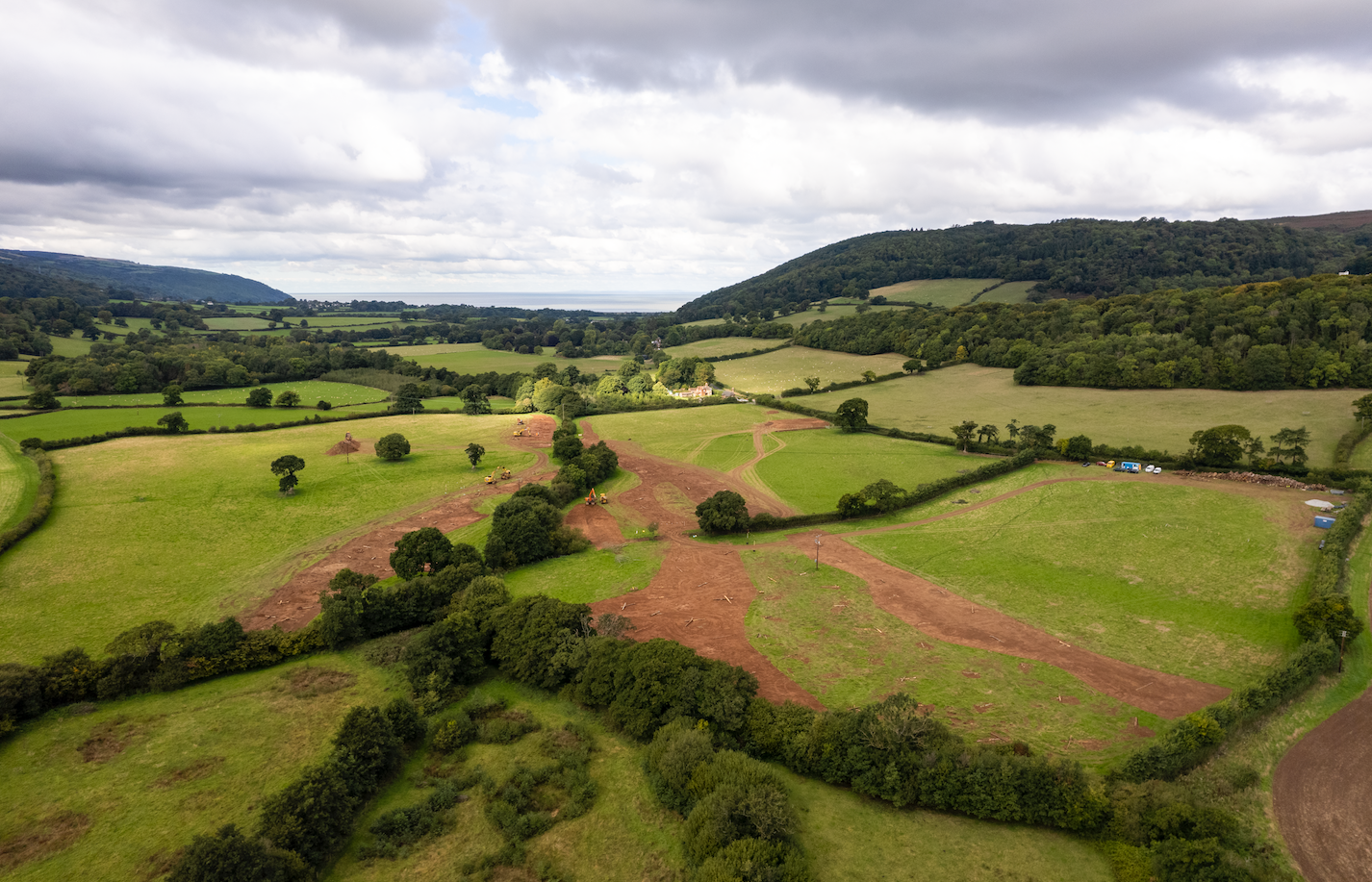Major rewilding project in Somerset to restore ancient floodplain
National Trust-led scheme will reconnect river to former floodplain to tackle drought, reduce flood risks and provide extensive wildlife habitat

A major river restoration in Somerset is set to become the first time a UK river is reconnected to its original floodplain – a move designed to reduce flood risks and boost biodiversity.
Following a successful pilot on a tributary to the River Aller on the Trust’s Holnicote Estate, the National Trust project is now being scaled up to include 15 hectares of the main river and the surrounding landscape which used to form part of the natural flood plain.
Under the plans, 25,000 trees will be planted, and the water course, which currently runs along a single channel, will be "reset", so it can flow across larger areas of the floodplain, creating a new wetland environment closer to how it would have moved through the landscape in the past.
This will mean that water will move more slowly through the landscape, with more pooling water helping to keep the environment wet in droughts, and also making the area less prone to sudden flooding at wetter times of year.
It is also hoped it will return lost habitats to a wide array of species, including aquatic insects such as dragonflies, fish such as brown trout, grass snakes, birds, bats, water voles and otters.
Ben Eardley, project manager for the National Trust said: “We now have a tried and tested method to start reversing the damage done to our rivers.
He said it was "like the ‘ctrl, alt, delete’ equivalent of a computer reset – and lets the river decide what it wants to be".
The first stage of the project is already underway with earthworks creating shallowly skimmed areas to "reset the valley bottom and natural river flow".
Large timbers have been partially buried in the floodplain so that habitat restoration can be "fast-tracked" with woody debris helping slow water flows and aiding the development of more hydrological and ecological diversity.
"This creates the kind of conditions that might have existed before – prior to the river system being heavily managed, with the river itself modified into a single channel," the National Trust said.
Floodplain wildflower seeds such as ragged robin, devil’s-bit scabious and meadowsweet will also be sown over the coming weeks.

"Next spring, further work will enrich the habitat, including the planting of about 25,000 native trees such as willow, bird cherry and black poplar," the trust said.
Mr Eardley said: “The river will no longer run along a single channel but form part of a complex waterscape with channels, pools, wetland and marshes. This helps slow the river flow to help combat flooding and drought events as well as increasing wildlife and tackling the impact of climate change by holding water in the landscape.
“By creating these new wetlands, they will not only hold more water during floods or drought but also effectively store carbon. So, the river catchment will be better able to cope with extreme weather events or changes in climate.”
The project has been part-funded by the Environment Agency as well as other organisations.
Harry Bowell, the director of land and nature at the National Trust said: “This innovative work to explore techniques on how to make our landscapes more resilient to climate change is absolutely critical as we tackle both the nature and climate crisis, over the coming years.
“Working in partnership, and at pace, with bodies like the Environment Agency is exactly what we need to be doing more of as we face these challenges."
Matt Pang, Environment Agency catchment coordinator said: “We hope this project as a whole will significantly contribute towards achieving targets for nature recovery and climate change at a landscape scale, and provide vital evidence towards restoring natural processes in our river systems.”
Join our commenting forum
Join thought-provoking conversations, follow other Independent readers and see their replies
Comments


Bookmark popover
Removed from bookmarks